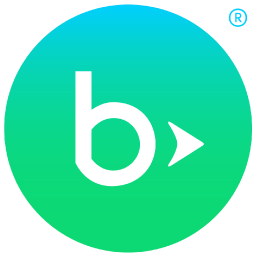Prospect Researchers vs. Fundraisers
The relationship between a prospect researcher and a frontline fundraiser can make or break a fundraising shop. Researchers provide gift officers with the information they need to create an engagement strategy. Fundraisers not only raise money, but they also can be a great source of information. Senior Business Consultant Lauren Enlow shares the top things she learned early in her career about how this relationship should work and gives and provides insights into what each person should know about how the other uses their respective Blackbaud product.Back when I was a young major gift officer (MGO) I thought I knew it all. I thought my gift of gab was all I needed to meet my goals. I didn’t think about identifying the best prospects or the science that went into prospect research and identification. It was my belief that I could talk anyone into giving money to the organization because my passion and the mission of the organization were strong enough to sway anyone.
Enter my assigned prospect researcher.
She was tasked with filling my portfolio with viable prospects. As a gift officer I knew the prospect researcher did a lot of “googling” and research to determine the viability of a prospect, but I also knew being out in the community and talking to people could also flesh out this information. My belief in my gift of gab and the trust in the “community gossip grapevine” led to many clashes with my researcher. I didn’t understand why she was adding certain individuals to my portfolio while I was meeting so many others who would make better prospects. This led to a very contentious portfolio review with me attempting to disqualify a large group of prospects and presenting a large list of alternatives. Things went downhill quickly.
Now that I work with the analytics services team at Blackbaud and have become immersed in the world of ResearchPoint™ and predictive modeling, I can see where it all went wrong. Here are three things I learned about the relationship between prospect researchers and frontline fundraisers.
I hope my little story gets you thinking about the relationship between the researcher and fundraisers in your shop. Consider reshaping what that relationship looks like in order to create an atmosphere of cooperation.
Enter my assigned prospect researcher.
She was tasked with filling my portfolio with viable prospects. As a gift officer I knew the prospect researcher did a lot of “googling” and research to determine the viability of a prospect, but I also knew being out in the community and talking to people could also flesh out this information. My belief in my gift of gab and the trust in the “community gossip grapevine” led to many clashes with my researcher. I didn’t understand why she was adding certain individuals to my portfolio while I was meeting so many others who would make better prospects. This led to a very contentious portfolio review with me attempting to disqualify a large group of prospects and presenting a large list of alternatives. Things went downhill quickly.
Now that I work with the analytics services team at Blackbaud and have become immersed in the world of ResearchPoint™ and predictive modeling, I can see where it all went wrong. Here are three things I learned about the relationship between prospect researchers and frontline fundraisers.
- Information is important, but we process information in different ways. Prospect researchers thrive on detailed information. They need to view a wholistic view of a prospect to determine whether they should be included in a portfolio. This information could include details relating to assets, investments, and philanthropic giving. Frontline fundraisers don’t need as much detail to successfully solicit a gift. They need synthesized information which will give them the material needed to create an engagement strategy for each prospect.
Tip: Think about how information is displayed in ResearchPoint and Blackbaud Raiser’s Edge NXT®. In ResearchPoint, you view detailed data about a prospect and assess their wealth. In Raiser’s Edge NXT, we can view this same information in a summary format. These products assist researchers and fundraisers in the key aspects of their jobs.
- Sharing is caring. Some of the healthiest relationships I have seen between fundraisers and researchers are where communication flows freely in both directions. Researchers who can synthesize information and present it in a palatable way to a fundraiser are able to mitigate questions around why the fundraiser should schedule a meeting. Fundraisers who can relay what they learned in a meeting to a researcher are able to close the loop on unanswered questions from the researcher.
Tip: Researchers and fundraisers should be in a constant conversation loop, sharing information that could be useful for each group. Prior to a prospect meeting, researchers could share bullet points from the wealth information found in ResearchPoint. After the meeting, fundraisers could enter their meeting notes in Raiser’s Edge NXT and share this information with the researchers to confirm what they found in ResearchPoint. The transfer of information is the core of a strong prospect management process.
- Trusting the process is key to running a smooth fundraising program. When one person doesn’t understand what went into the process, they are likely to go rogue. Using myself as an example, when I didn’t understand the criteria used by my prospect researcher to identify prospects for my portfolio it caused distrust. That distrust led to my rogue behavior where I attempted to identify my own top prospects. A simple conversation explaining the criteria could have averted a prospecting crisis.
Tip: When creating your prospect management process, make sure everyone on the team understands what “goes into the secret sauce.” Your fundraisers need to have a basic understanding of what information researchers can access in ResearchPoint and how they are using it to qualify prospects, while researchers need to understand what information is being tracked in Raiser’s Edge NXT and where prospects are in the solicitation process. When the silos are removed and everyone understands the process, prospect management becomes free flowing and easy.
I hope my little story gets you thinking about the relationship between the researcher and fundraisers in your shop. Consider reshaping what that relationship looks like in order to create an atmosphere of cooperation.
4
Categories
- All Categories
- 6 Blackbaud Community Help
- 209 bbcon®
- 1.4K Blackbaud Altru®
- 394 Blackbaud Award Management™ and Blackbaud Stewardship Management™
- 1.1K Blackbaud CRM™ and Blackbaud Internet Solutions™
- 15 donorCentrics®
- 359 Blackbaud eTapestry®
- 2.5K Blackbaud Financial Edge NXT®
- 646 Blackbaud Grantmaking™
- 563 Blackbaud Education Management Solutions for Higher Education
- 3.2K Blackbaud Education Management Solutions for K-12 Schools
- 934 Blackbaud Luminate Online® and Blackbaud TeamRaiser®
- 84 JustGiving® from Blackbaud®
- 6.4K Blackbaud Raiser's Edge NXT®
- 3.7K SKY Developer
- 243 ResearchPoint™
- 118 Blackbaud Tuition Management™
- 165 Organizational Best Practices
- 238 The Tap (Just for Fun)
- 33 Blackbaud Community Challenges
- 28 PowerUp Challenges
- 3 (Open) Raiser's Edge NXT PowerUp Challenge: Product Update Briefing
- 3 (Closed) Raiser's Edge NXT PowerUp Challenge: Standard Reports+
- 3 (Closed) Raiser's Edge NXT PowerUp Challenge: Email Marketing
- 3 (Closed) Raiser's Edge NXT PowerUp Challenge: Gift Management
- 4 (Closed) Raiser's Edge NXT PowerUp Challenge: Event Management
- 3 (Closed) Raiser's Edge NXT PowerUp Challenge: Home Page
- 4 (Closed) Raiser's Edge NXT PowerUp Challenge: Standard Reports
- 4 (Closed) Raiser's Edge NXT PowerUp Challenge: Query
- 779 Community News
- 2.9K Jobs Board
- 53 Blackbaud SKY® Reporting Announcements
- 47 Blackbaud CRM Higher Ed Product Advisory Group (HE PAG)
- 19 Blackbaud CRM Product Advisory Group (BBCRM PAG)



